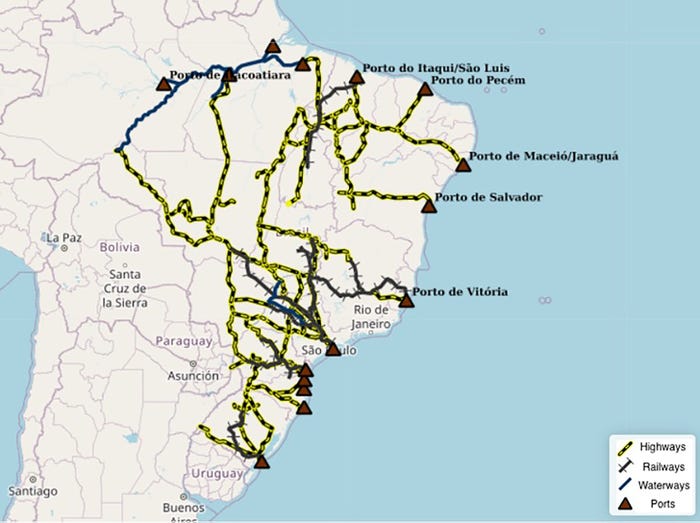
The United States isn’t the only country mulling over improvements to infrastructure. For the past 20 years, an average of 2% of the Brazilian GDP was used to build new infrastructure projects.
The problem? The average in other emerging countries is about 5%.
Experts from IBGE (Brazilian Institute of Geography and Statistics) say that this imbalance between the country’s optimistic economic growth and poor infrastructural investments will go on for the next decade or so, especially in highways. Some 87% of products are transported by trucks that drive over poorly maintained roads.
Brazil is a big country; its total land mass is around 3 million square miles, slightly smaller than the United States. Brazil has some 211 million people compared to 322 million in the states, so its economy thrives on exports. From beans to beef, Brazil ranks in top ten for many of the world’s most important food commodities. But the regions where most of this production takes place are located in the west, quite far from shipping facilities on the Atlantic Ocean. According to CNA (the Brazilian National Agricultural Confederation), Brazil fails to produce an extra 4 million tons (147 million bushels) in grains due to poor transportation infrastructure.

This inefficiency in transportation ranks Brazil 56th in the Logistics Index Performance of 2019, a World Bank list that evaluates the logistical quality of 160 countries (the U.S. ranks 14th).
What’s next
Many projects have been presented to governors in past years to upgrade our infrastructure. The most recent one brings some hope to this problem. The idea is to reduce dependency on trucks from 87% to 70%, with the other 30% divided between railways, waterways and cabotage (shipping along two points via coastlines). The government is planning on investing $90 billion to execute this project that is expected be done by 2035, helping the economy to grow between 4.3 to 6% until then.
Time will tell if these improvements become reality.
The opinions of the author are not necessarily those of Farm Futures or Farm Progress.
About the Author(s)
You May Also Like






